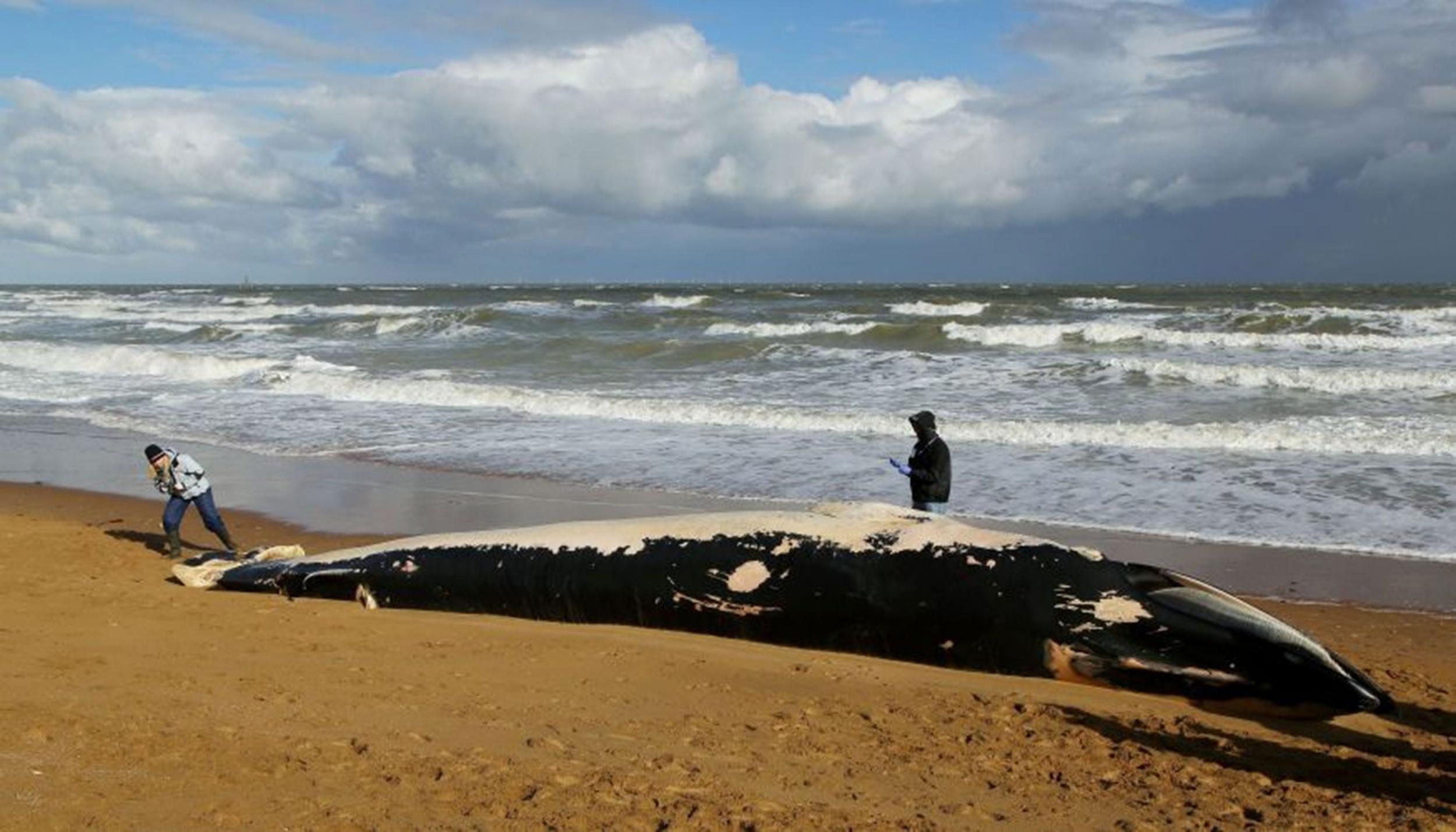Dead body of 36ft-long whale washes up on Kent beach
The whale is believed to have choked on a plastic bag

Your support helps us to tell the story
From reproductive rights to climate change to Big Tech, The Independent is on the ground when the story is developing. Whether it's investigating the financials of Elon Musk's pro-Trump PAC or producing our latest documentary, 'The A Word', which shines a light on the American women fighting for reproductive rights, we know how important it is to parse out the facts from the messaging.
At such a critical moment in US history, we need reporters on the ground. Your donation allows us to keep sending journalists to speak to both sides of the story.
The Independent is trusted by Americans across the entire political spectrum. And unlike many other quality news outlets, we choose not to lock Americans out of our reporting and analysis with paywalls. We believe quality journalism should be available to everyone, paid for by those who can afford it.
Your support makes all the difference.The dead body of a 36ft-long (11m) whale has washed up on a beach in Kent.
The huge creature, believed to be a minke whale, was found on the shore at Foreness Point, near Cliftonville.
Police have since placed a cordon around the animal’s lifeless body.
A Coastguard spokesman told Kent Online that the whale appeared to be around four-years-old. It likely died after eating a plastic bag or a similar piece of waste, because whales sometimes confuse floating debris as jellyfish.
Staff members from the Institution of Zoology have been alerted. The organisation is partnered with the UK Cetacean Strandings Investigation Programme (UK CSIP), which documents examples of beached and dead cetaceans, basking sharks and marine turtles.
They will also soon begin dissecting the minke whale, Kent Online reported.
Experts from the Natural History Museum in London, which is also linked to the CSIP, also plan to take samples from the dead whale.
“The samples provide an insight into the cause of death, as well as examining the diet of the whale and any diseases or parasites it contracted during its life,” Rebecca Lyal, the cetacean strandings support officer based at the Natural History Museum, told Kent Online.
Julia Cable, of East Sussex-based British Divers Marine Life Rescue (BDMLR), said that staff members have tried to identify the species of the whale.
“It looks like an 11-metre long adult minke whale, but it is difficult to say with certainty without seeing the underside of it,” she said.
Living for as long as 50 years on average, minke whales are found both in the tropics and at the edges of the northern hemisphere.
Experts regard minke whales as generally solitary creatures which live on a diet of fish, including herring and whiting, as well as some plankton. They can swim up to 13mph.
Additional reporting by PA
Join our commenting forum
Join thought-provoking conversations, follow other Independent readers and see their replies
Comments